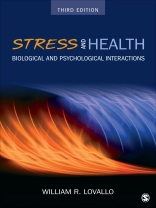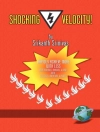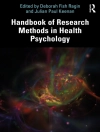Stress and Health: Biological and Psychological Interactions is a brief and accessible examination of psychological stress and its psychophysiological relationships with cognition, emotions, brain functions, and the peripheral mechanisms by which the body is regulated. Updated throughout, the Third Edition covers two new and significant areas of emerging research: how our early life experiences alter key stress responsive systems at the level of gene expression; and what large, normal, and small stress responses may mean for our overall health and well-being.
Mục lục
Chapter 1: Psychosocial Models of Health and Disease
The Standard Biomedical Model and New Approaches to Medicine
A Biobehavioral Model of Disease and Treatment
Placebo Effects
Psychoneuroimmunology
Cultural, Intrapersonal, and Physiological Influences in Coronary Heart Disease
Psychosocial Theories of Disease and Treatment
The Foundation of Behavioral Medicine
Chapter 2: History of the Concept of Stress
The Age of Enlightenment and the Emergence of Scientific Thought
Descartes and the Mechanical Model of Living Things
The Worldview and Premises of Modern Science
The Mind-Body problem
Claude Bernard and the Modern Biomedical Model
Claude Bernard and the Vitalists
Walter Cannon
Definition of Stress
Hans Selye
The Concept of Allostasis
Additional Considerations on the Stress Concept
Chapter 3: Homeostatic Regulation: Normal Function and Stress Responses
A Hierarchy of Homeostatic Controls
Intrinsic Control Mechanisms
Autonomic Controls Over Homeostasis
Three Autonomic Divisions
Coordinated Actions of the Autonomic Branches
Higher Controls Over Homeostasis
The Hypothalamus and Emotional Expression
Endocrine Responses During Stress
Adrenomedullary Response
Adrenocortical Response
Negative Feedback by Cortisol
Cortisol During Stress
Beta-endorphin
Chapter 4: Physical and Psychological Stress
Classes of Stress Responses
The Exercise Response
Exercise and Adaptation to Stress
The Fight-or-Flight Response
Different Emotions and Motivations Accompany Exercise and the Fight–Flight Response
Why Is Exercise Considered Good If It Is a Stressor?
Psychological Stress
The Responses to Aversive and Nonaversive Challenges
Exposure to Noise and Shock
Activation and Distress
Chapter 5: Central Nervous System Integration of the Psychological Stress Response
Appraisals, Psychological Stress, and Negative Emotions
Primary and Secondary Appraisals
Outcomes of Coping Efforts and Physiological Responses
Central Integration of the Response to Psychological Stress
The Limbic System and Associated Parts of the Brain
Primary Appraisals: Sensory Intake and Interpretation of the Environment
What Is It? And Where Is It?
Cognition and Emotion: Generating Emotions Based on Appraisal Processes
Prefrontal-Limbic Interactions and Thoughts and Feelings
Secondary Appraisals: How Well Did Our Coping Attempt Work?
Physiological Correlates of Primary and Secondary Appraisal Processes
Internal Sources of Amygdaloid Activity and Internally Generated Emotional Responses
Initiation of Behavioral, Autonomic, and Neuroendocrine Responses to Psychological Stressors
Feedback to the Cortex and Limbic System: The Central Feedback Subsystem
Autonomic and Endocrine Outflow: The Emotional Response Subsystem
Chapter 6: Stress and the Endocrine System
Overview of Stress Endocrine Regulation
Activation of Stress Endocrine Secretion and the Central Corticotropin-Releasing Factor System
Cortisol’s Feedback Actions in the Central Nervous System
Cortisol Effects on Frontal-Limbic Activity
Amygdala Responses to Cortisol and Altered Responsivity of the Central Nervous System
Amygdala Sensitization and Potential Implications for Health
The Hypothalamic-Sympatho-Adrenomedullary Axis
Stress Endocrine Secretion and Regulation of Long-Term Stress Reactivity
Hierarchy of Autonomic and Endocrine Controls Over Homeostasis Leading to Long-Term Memory Formation
Recap: How Ideas Come to Have Power Over Our Bodies
Chapter 7: The Immune System Stress and Behavior
Overview of the Immune System
Structural Components of the Immune System
Immune System Cells
Immune System Messengers
Innate Resistance
Acquired Immunity and Establishment of Immune System Memory
The Behavior-Immune Interface
Behavior-Immune Interactions and Health Indicators
Stress Buffers, Positive Emotions, and Physical Health
Chapter 8: Helplessness Coping and Health
Death Due to Uncontrollable Stress
Helplessness and Exposure to Uncontrollable Stress
Studies of Ulceration in Rats
“Learned Helplessness” and the Consequences of Lack of Control
Lazarus’s Model of Psychological Stress and Helplessness
Central Neurotransmitters and Severe Stress
Uncontrollable Shock, Norepinephrine, and Depression
Serotonin Mechanisms
Emotions and Health
Chapter 9: Genes, Stress, and Behavior
Early Life Experience, Epigenetic Programming of Gene Expression, and Stress Reactivity
A Rat Model of Early Experience, Development, and Responses to Stress
Maternal Separation and Neglect
Nurturing by Rat Mothers is Increased by Brief Separation
Genotype, Genetic Vulnerability to Early Life Adversity, and Psychobehavioral Outcomes in Humans
Chapter 10: Individual Differences in Reactivity to Stress
A Proposed Classification of Individual Differences in Reactivity
Persons May Differ in Stress Reactivity Because of Inborn Factors or Experience
Individual Differences in Stress Responses May be Conditioned by Functional Alterations at Three Levels in the System
Individual Differences in Evaluative and Emotional Processes—Level I
Individual Differences in Hypothalamic and Brainstem Responses to Stress—Level II
Individual Differences in Peripheral Responses to Stress—Level III
Chapter 11: Health Implications of Exaggerated and Blunted Stress Reactivity
Reactivity Tests in Medicine
Health Outcomes Related to Exaggerated Cardiovascular and Endocrine Reactivity
Individual Differences in Level I Reactivity and Health Implications
Individual Differences in Level II Reactivity: Cardiovascular Reactivity as a Mediator of Disease Risk
Individual Differences in Level III Reactivity and Disease
Blunted Stress Reactivity and Health
Early Life Adversity and Blunted Stress Reactivity
Early Life Adversity, Psychological Characteristics, Cognition, and Behavioral Regulation
Early Life Adversity and Low Versus High Stress Reactivity: Unanswered Questions
Blunted Stress Reactivity, Social Adversity, and Health
Discussion
Exaggerated Reactivity and Disease
Blunted Reactivity and Disease
Family Dysfunction, Socioeconomic Status, Neighborhood Characteristics, and Health Outcomes
Chapter 12: Behavior, Stress, and Health
The Historical Dilemma of Mind-Body Dualism
Matter and Behavior
Behavioral Medicine in Relation to Traditional Medicine
Systems Organization and Stress
Psychological Stress and Its Consequences
Stress and Behavioral Medicine
Stress, Stress Reduction, and Improved health
Giới thiệu về tác giả
William R. Lovallo (Ph D, biological psychology, University of Oklahoma, 1978) conducts research on relationships between stress, biological responses, and their implications for health. His current projects address cardiovascular and endocrine responses during mental stress and effects on persons at risk for alcoholism and other addictions. He has served as director of the Behavioral Sciences Laboratories and as senior research career scientist at the VA Medical Center and is professor of psychiatry and behavioral sciences at the University of Oklahoma Health Sciences Center in Oklahoma City. Lovallo has also served as associate director of the John D. and Catherine T. Mac Arthur Foundation′s Research Network on Mind-Body Interactions. He is on advisory committees for the National Institutes of Health and the Veterans Administration.












